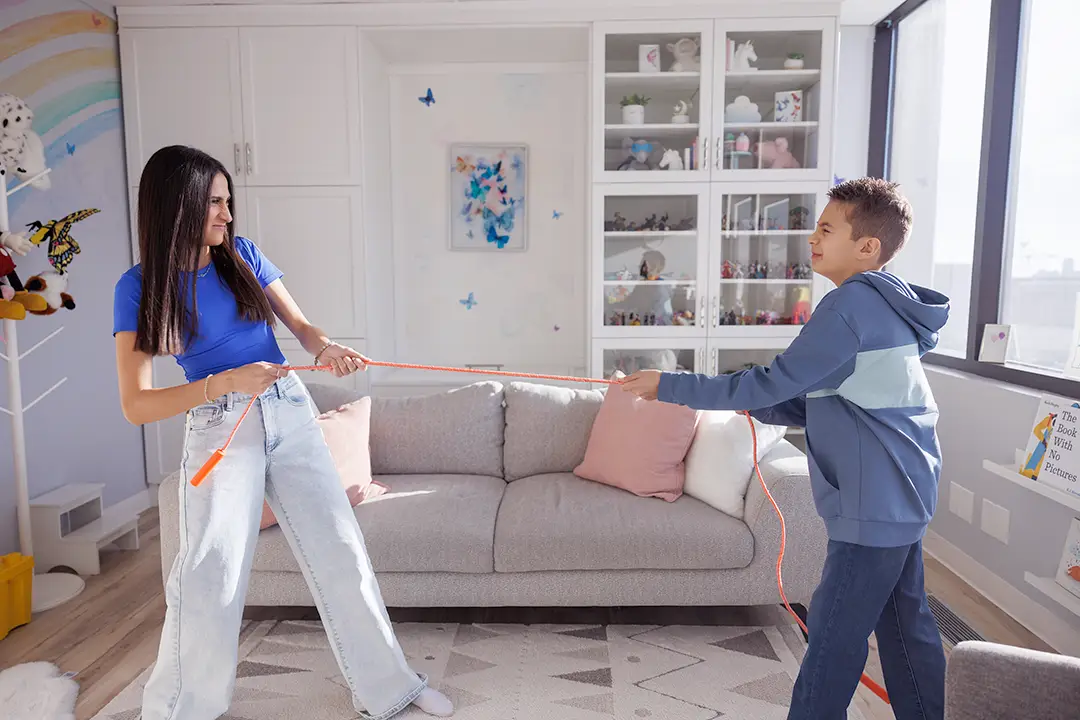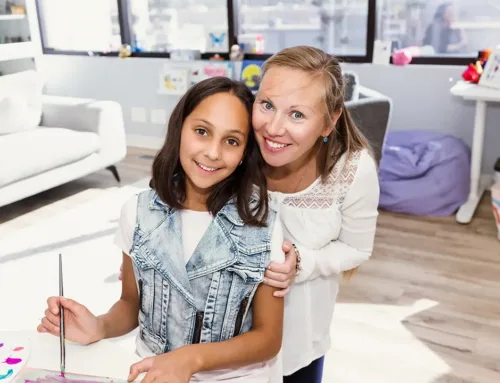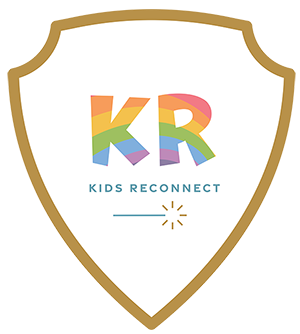
Tips to help your kids of different ages play together
Although having kid brother or sisters can be extra fun,
a large family (with more than one child!) also brings some challenges
for kids and their parents.
In this blog post, child psychologist Marcella Galizia shares
creative ideas from the play therapy playroom
about how parents can help siblings
of different ages to enjoy playing together.
What play looks like is different at different ages and stages
In my experience as a play therapist, many parents report that their kids of different ages are having difficulties playing together. Parents also often share that it’s difficult for them to play with their children of different ages simultaneously, so that everyone is included in the play.
These challenges are often due to siblings having different play skills, abilities, and interests. As a result, one child may feel left out in the play, whereas others may feel bored or disinterested.
This is especially true when there is a great gap in age between kids. There are stark differences in what play looks like between a baby (birth to 1) or toddler (1 to 3 years old) and a preschool-aged child (3 to 5 years old) or with an even greater age gap, like with school-age children (6 to 12 years old). The greater the gap, the trickier playing together can become.
Some parents report strains and tensions between siblings at playtime. Parents can see that they are using toys differently, or playing in very different ways. This can quickly lead to conflict, where both kids become upset.
An example of sibling play challenges
For instance, a toddler walks past their 6-year-old sibling’s LEGO® bricks creation and pushes it down and laughs when it falls to the floor, while the older 6-year-old child yells out, screams, or even hits or pushes their sibling to the floor in anger and frustration. The toddler cries and the parents end up separating the siblings.
In this example, the toddler isn’t trying to be hurtful (like the older sibling might believe); they are learning cause and effect in play. On the other hand, the 6-year-old sibling may be past play for this purpose and is now interested in building and construction using imagination to create something specific that’s on their mind. The difference in each child’s understanding of how to use the same toys can be a great source of the conflict and tension in the sibling dynamic.
A similar and common challenge is that kids with greater play abilities have already mastered using toys in specific ways and may be disinterested in playing with their younger sibling. They may say things like: “that’s boring” or “I don’t want to play that” or “that’s for babies and I’m not a baby.” Your child isn’t trying to be difficult; they are letting you know, “we play differently” and “I’m beyond that stage of development.”
This leads to a very important and complex question that parents often have:
What games can your family play that are fun for everyone?
Well, that depends on their ages, developmental stages, and the age gap between them. Let’s take the toddler and school-age child example above.
Toddlers have very simple play, while school-age children have more complex play like imaginative or pretend play. In this case, the toddler will use toys in simple ways while the school-age child will create more stories with plots and subplots.
So what can you do to help them play together?
You could offer the toddler to take a simple role in the play, like moving a toy truck across the floor (a simple act in the play), while the school-age child creates the parking lot from LEGO® bricks, with all the cars in it to “park” overnight after “paying”. In this way, your kids are joining to play together within the same theme, at their own developmental abilities, levels, and enjoyment. The older sibling can ask the younger sibling to move cars toward the parking lot, or “drive” cars up, while the older sibling can collect the drivers’ payment and park into the toy parking garage.
Other games that could possibly include siblings of different ages may involve:
- Art: Colouring, drawing, painting. Of course, your children will have different fine motor skills and abilities, but children of different ages can equally enjoy this activity or type of play.
- Gross motor play: Jumping, running, bouncing, and climbing can also be equally enjoyed by children of different ages. Again, they will have different physical abilities, but younger children tend to feel overly confident in their skills to be able to join these types of activities with their older siblings.
- Some simple board games that don’t involve many complex rules, numbers, or strategy (like chess) may also be equally enjoyed across different ages and stages of development. Consider board games such as Chutes and Ladders, Candy Land, Trouble, or UNO Junior.
More playful parenting? GAME ON!
Follow along as we grow this blog series,
designed to help parents grow their Superpower playful parenting skills.
Meet the author








